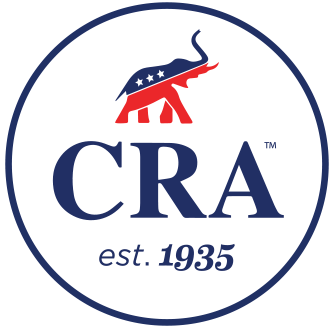Join CRA TODAY!

There is no “US” Without You!
Thank you for visiting us here at the online headquarters for THE CALIFORNIA REPUBLICAN ASSEMBLY.
If you find value in the work we are doing to help fight for conservative values here in the Golden State, PLEASE BECOME A MEMBER TODAY!
(THE RIPON SOCIETY) – As nationwide crime rates surge—at least 16 cities broke homicide records in 2021 — police departments need capable and coolheaded cops. But officer retirements and resignations have surged in the past two years, and it’s become harder for many agencies to recruit quality candidates — or any at all.
In New York City, over 5,300 NYPD uniformed officers resigned or retired in 2020 — a 75% spike over the previous year. The department reportedly had to cap the number who could file papers simultaneously so as not to overwhelm the system. In Minneapolis, 105 officers left the department in 2020: more than double the average attrition rate. Seattle hemorrhaged 180 officers in 2020 and 170 in 2021 — a near doubling of the 95 officers who left in 2019. In Chicago, 660 cops retired in 2021, nearly twice as many as in 2018. And California’s police staffing crisis reportedly has Bay Area departments unable to fill hundreds of positions. Oakland PD lost a record-breaking 86 officers in 2021 and 2022 is on pace to be worse. And the San Francisco PD is reportedly suffering from a significant deficit among even non-sworn professional staff.
Why don’t cops want to stay on the job and why don’t others want to enter it? Among other reasons, the work has become more dangerous and less gratifying.
The increased risk is both physical and reputational. Following the 2020 death of George Floyd, a tsunami of anti-police sentiment confronted cops from the public, the media, and policymakers. The ideas that police are blanketly racist and cause more harm than good dominated public discussion.
In this environment, individual officers increasingly experienced life-altering vilification even when they had done nothing wrong. When Columbus, Ohio officer Nicholas Reardon shot Ma’Khia Bryant as she attempted to stab another girl in April 2021, he was met with a campaign of abuse. Joe Biden’s White House claimed the shooting underscored policing’s systemic racism and U.S. Senators Cory Booker and Raphael Warnock cited Reardon’s actions as demonstrating the need for police overhaul. Many responses were more personal and menacing: NBA star LeBron James tweeted, “YOU’RE NEXT #ACCOUNTABILITY,” with an hourglass emoji over a photo of an officer at the shooting scene. All this — although Reardon was not even charged. His actions were deemed justifiable homicide, protecting an innocent girl. Officers in similar conditions nationwide have found themselves and their families the targets of threats and abuse.
Meanwhile, police have become at greater risk of physical harm from hesitating in moments of confrontation. After Minneapolis Officer Derek Chauvin was charged with murdering George Floyd by pinning him under his knee, jurisdictions rushed to adopt often overlapping and confusing bans on chokeholds. In New York, for instance, the City Council passed and then-mayor Bill de Blasio signed legislation enhancing an existing ban, enabling prosecutors to bring misdemeanor charges against officers if they used any move during an arrest that restricted the person’s breathing “in any way.”

